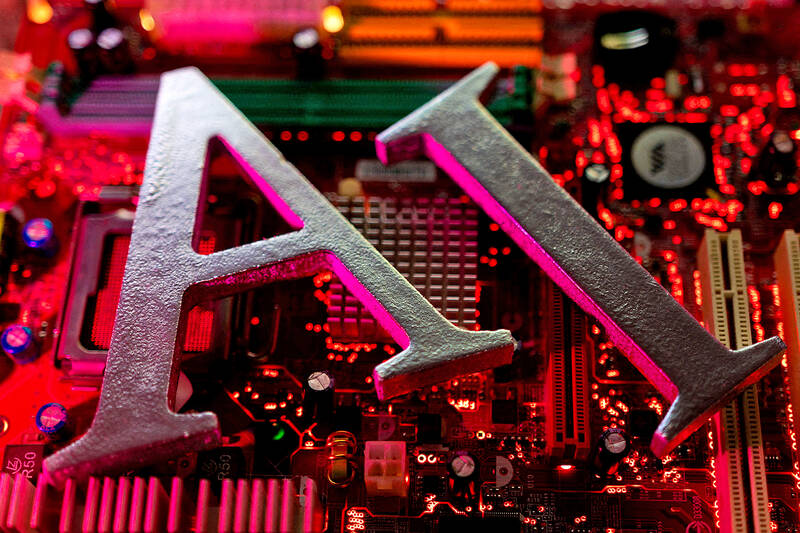The production value of the passive components industry is estimated to grow from NT$217.8 billion (US$6.80 billion) last year to NT$242 billion this year, Hsiao Jui-chung (蕭睿中), an analyst at the government-sponsored institute’s Industry, Science and Technology International Strategy Center said at a seminar on industrial trends in Taipei.
The main reason for the growth is the strong recovery of related industries, namely artificial intelligence (AI) servers and terminals. High demand for these products contributed to the industry’s positive growth in the third quarter, Hsiao said.

Photo: Reuters
The industry’s inventory reached a safe level in the second quarter, with capacity utilization rates for standard products and high-end niche products expected to increase 5 to 10 percent in the second half of the year, he said.
Export values have also grown year-on-year, with every month seeing higher numbers except for February, the month when the Lunar New Year holiday took place.
Market dependency and exports to China have fallen, due to the tech dispute between the US and China, as well as the trend for electric manufacturers to distribute manufacturing, Hsiao said.
Looking ahead, Hsiao predicted that the production value of the industry would grow 6.3 percent next year to NT$257.1 billion, driven by AI computers, smartphones and niche components for vehicle use.
Passive components for vehicle use made up about 17 percent of the industry’s revenue last year, with the proportion expected to rise to 20 percent this year, Hsiao said.
Worldwide demand for vehicle-use multi-layer ceramic capacitors (MLCC) could reach 450 billion units this year, and might increase to 500 billion next year, he said.
An AI laptop needs an average of 200 more MLCCs than a regular laptop, in order to adapt to the higher specifications in its processor and memory, Hsiao said.
Taipei Time / CNA
